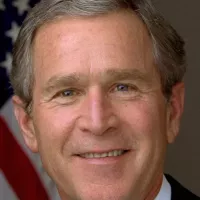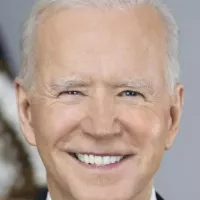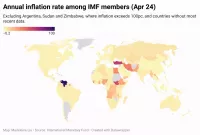Mongolia is a landlocked East Asian country bordered by Russia and China. It is the world's most sparsely populated sovereign state with approximately 3.5 million people spread across 1,564,116 square kilometers. It's the largest landlocked country without a border on an inland sea. The geography is mainly grassy steppe, with mountains in the north and west, and the Gobi Desert in the south. Ulaanbaatar is the capital and largest city, housing about half of Mongolia's population.
1904: Construction of Choijing Lamiin Sume
In 1904, the lamasery Choijing Lamiin Sume was built in the Chinese tradition; today, it serves as a museum.
1911: Head of Church Also Khan
From 1911 on, the head of the Mongolian Buddhist Church had also been the Khan of the country.
1911: Mongolia Declares Independence
In 1911, after the collapse of the Qing dynasty, Mongolia declared its independence.
1911: Qing Dynasty Control
Until 1911, the Qing dynasty maintained control of Mongolia with a series of alliances and intermarriages, as well as military and economic measures.
1911: Fall of Qing Dynasty and Declaration of Independence
With the fall of the Qing dynasty in 1911, Mongolia under the Bogd Khaan declared its independence.
1918: First Census
The first census in the 20th century was carried out in 1918 and recorded a population of 647,500.
1919: Chinese Troop Occupation
In 1919, after the October Revolution in Russia, Chinese troops led by warlord Xu Shuzheng occupied Mongolia.
October 1920: Ungern's Arrival in Mongolia
In October 1920, as a result of the Russian Civil War, the White Russian Lieutenant General Baron Ungern led his troops into Mongolia.
1920: Beginning of Mongolian Press
In 1920, Mongolian press began with close ties to the Soviet Union, establishing the "Unen" ("Truth") newspaper, similar to the Soviet Pravda.
February 1921: Ungern Defeats Chinese Forces
In early February 1921, Baron Ungern defeated the Chinese forces in Niislel Khüree (now Ulaanbaatar) with Mongol support.
March 1921: Mongolian Army Takes Kyakhta
On 18 March 1921, the Mongolian army took the Mongolian part of Kyakhta from Chinese forces.
July 1921: Declaration of Independence
On 6 July 1921, Russian and Mongolian troops arrived in Khüree, and Mongolia declared its independence again on 11 July 1921.
1921: People's Party Forms Government
From 1921, the People's Party formed the government.
1921: Independence from the Republic of China
In 1921, Mongolia achieved actual independence from the Republic of China.
1921: Early Leaders of the Mongolian People's Republic
The early leaders of the Mongolian People's Republic (1921–1952) included many with Pan-Mongolist ideals.
1924: Establishment of the Mongolian People's Republic
In 1924, after the Bogd Khaan died, the Mongolian People's Republic was established.
1924: People's Revolutionary Party
In 1924, the People's Party became known as the People's Revolutionary Party.
1924: Buddhist Monks
In 1924, the number of Buddhist monks in Mongolia was 100,000.
1928: Rise of Khorloogiin Choibalsan
In 1928, Khorloogiin Choibalsan rose to power in Mongolia.
1930: Soviet Union Stops Buryat Migration
In 1930, the Soviet Union stopped Buryat migration to the Mongolian People's Republic to prevent Mongolian reunification.
1931: Japanese Invasion of Manchuria
In 1931, the Japanese invasion of neighboring Manchuria threatened Mongolia.
1937: Start of Stalinist Purges
In 1937, the Stalinist purges in Mongolia began, resulting in the deaths of more than 30,000 people.
1938: Disassembly of the Temple of Maitreya
In 1938, the temple of Maitreya, an example of Tibeto-Mongolian architecture, was disassembled.
1939: End of Stalinist Purges Led by Choibalsan
Choibalsan, who led a dictatorship and organized Stalinist purges in Mongolia between 1937 and 1939, died suspiciously in the Soviet Union in 1952.
1939: Soviet-Japanese Border War
During the Soviet-Japanese Border War of 1939, the Soviet Union successfully defended Mongolia against Japanese expansionism.
February 1945: Yalta Conference
In February 1945, the Yalta Conference provided for the Soviet Union's participation in the Pacific War, stipulating that Outer Mongolia would retain its independence after the war.
October 1945: Referendum on Independence
On 20 October 1945, a referendum took place in Outer Mongolia, with official numbers reporting 100% of the electorate voting for independence.
1948: Introduction of Amateur Boxing
Amateur boxing has been practiced in Mongolia since 1948.
October 1949: Mutual Recognition with China
On 6 October 1949, after the establishment of the People's Republic of China, both countries confirmed their mutual recognition.
January 1952: Yumjaagiin Tsedenbal Takes Power
On 26 January 1952, Yumjaagiin Tsedenbal took power in Mongolia after the death of Choibalsan.
1952: Illiteracy Eliminated
By 1952, illiteracy was virtually eliminated in Mongolia.
1952: Death of Choibalsan
Choibalsan, who led a dictatorship and organized Stalinist purges in Mongolia between 1937 and 1939, died suspiciously in the Soviet Union in 1952.
1952: Early Leaders of the Mongolian People's Republic
The early leaders of the Mongolian People's Republic (1921–1952) included many with Pan-Mongolist ideals.
1955: Republic of China Vetoes UN Admission
In 1955, the Republic of China used its Security Council veto to stop the admission of the Mongolian People's Republic to the United Nations.
1958: Introduction of Freestyle Wrestling
Freestyle wrestling has been practiced since 1958 in Mongolia.
1960: Founding of Olympic Boxing National Team
In 1960, the Mongolian Olympic boxing national team was founded.
October 1961: Mongolia Admitted to the UN
On 27 October 1961, Mongolia was admitted to the UN.
1961: Lowest Annual Precipitation in the Gobi Desert
The lowest annual precipitation of 41.735 mm occurred in the Gobi Desert in 1961-1990.
1964: Boxing Ban
In 1964, the Communist government of Mongolia banned boxing.
1967: End of Boxing Ban
In 1967, the government ended the ban on boxing.
1970: Fertility Rate
In 1970–1975, fertility was estimated to be 7.33 children per woman.
1975: Fertility Rate
In 1970–1975, fertility was estimated to be 7.33 children per woman.
1981: Eradication of Diseases
By 1981, Mongolia had successfully eradicated smallpox, typhus, plague, poliomyelitis, and diphtheria.
August 1984: Tsedenbal's Retirement
In August 1984, while Tsedenbal was visiting Moscow, his severe illness prompted the parliament to announce his retirement and replace him with Jambyn Batmönkh.
1989: Number of Christians
According to the Christian missionary group Barnabas Fund, the number of Christians in Mongolia was just four in 1989.
1989: Anti-Communist Revolutions
In 1989, in the wake of anti-communist revolutions elsewhere, Mongolia began its own transition.
January 1990: Peaceful Democratic Revolution
In January 1990, Mongolia began the peaceful Democratic Revolution.
1990: Number of Buddhist Monks Drops
By 1990, the number of Buddhist monks in Mongolia had dropped to 110, following repression by the communist government.
1990: One-Party System Ends
In 1990, the one-party system ended in Mongolia.
1990: Peaceful Democratic Revolution
In early 1990, Mongolia conducted its own peaceful democratic revolution.
1990: English Supplants Russian
Since 1990, English has been replacing Russian as the most popular foreign language in Mongolia.
1990: Improvement in Health Indicators
Since 1990, Mongolia experienced steady improvement in key health indicators like life expectancy and infant and child mortality.
1990: Revival of Historic Mongolian Script
Since the 1990 revolution there has been a minor revival of the historic Mongolian script.
1990: Lowest Annual Precipitation in the Gobi Desert
The lowest annual precipitation of 41.735 mm occurred in the Gobi Desert in 1961-1990.
1991: Adventists Reported
In 1991, Seventh-day Adventists reported zero members in Mongolia.
1991: Stock Exchange Established
The Mongolian Stock Exchange was established in Ulaanbaatar in 1991.
1991: Dissolution of the Soviet Union
The dissolution of the Soviet Union in 1991 strongly influenced Mongolian politics and youth.
1991: Restoration of Public Religious Practice
The fall of communism in 1991 restored public religious practice in Mongolia.
February 1992: Adoption of New Constitution
On February 13, 1992, with the adoption of the new Constitution of Mongolia, the official name of the state became "Mongolia" (Mongol Uls).
1992: New Constitution
In 1992, Mongolia adopted a new constitution, marking a significant step in its transition.
1992: Sükhbataar's Proposal
In 1992, Sükhbataar proposed that the name 'Mongol' derived from Mugulü.
1992: Member of The Forum of Small States
Mongolia has been a member of The Forum of Small States (FOSS) since the group's founding in 1992.
1993: First Election Victory for Non-Communist Parties
In 1993, the first election victories for non-communist parties came in the presidential elections.
1993: Increase in University Enrollment
Starting in 1993 there was a six-fold increase in the number of students attending university.
1996: People's Party Government Ends
In 1996, the People's Party government ended.
1996: Parliamentary Election Victory
In 1996, there was an election victory for non-communist parties in the parliamentary elections.
1997: World Trade Organization Membership
In 1997, Mongolia joined the World Trade Organization.
August 28, 1998: Drafting of new law on press freedom
On August 28, 1998, a new law on press freedom was drafted with help from international NGOs.
January 1, 1999: Enactment of new law on press freedom
On January 1, 1999, the new law on press freedom was enacted, paving the way for media reforms.
2000: People's Party Forms Government Again
From 2000, the People's Party formed the government again.
2000: Fertility Rate
In 2000–2005, fertility was estimated to be about 2.1 children per woman.
2003: First Catholic Bishop Named
In 2003, a missionary from the Philippines was named Mongolia's first Catholic bishop.
2004: People's Party in Coalition
From 2004, the People's Party was part of a coalition with the Democrats and two other parties.
2004: Mongolia Invited to OSCE
In 2004, under Bulgarian chairmanship, the Organization for Security and Co-operation in Europe (OSCE) invited Mongolia as its newest Asian partner.
November 2005: Bush Visits Mongolia
On 21 November 2005, George W. Bush became the first-ever sitting U.S. president to visit Mongolia.
2005: Fertility Rate
In 2000–2005, fertility was estimated to be about 2.1 children per woman.
2006: People's Party Dominant in Coalitions
After 2006, the People's Party was the dominant party in two other coalitions.
2006: English Language Education
As of 2006, English was introduced as a subject in all secondary schools across Mongolia, commencing from the fourth grade.
2006: Troops Deployed in Kosovo
From 2005 to 2006, about 40 Mongolian troops were deployed with the Belgian and Luxembourg contingents in Kosovo.
2006: Improving Media Environment
Since 2006, the media environment has been improving in Mongolia with the government debating a new Freedom of Information Act, and the removal of any affiliation of media outlets with the government.
May 2007: Tsogbadrakhyn Mönkhzul Ranked Third Worldwide
As of May 2007, Tsogbadrakhyn Mönkhzul was ranked third in the world in the 25-metre pistol event.
2007: World Bank Report on Healthcare
In 2007, a World Bank report highlighted Mongolia's relatively strong health indicators despite its low per capita income, attributing it to the health gains achieved during the socialist period.
2007: Population Growth Rate
Mongolia's population growth rate was estimated at 1.2% in 2007.
2008: Number of Christians Grows
As of 2008, the Christian missionary group Barnabas Fund, estimated the number of Christians in Mongolia had grown to around 40,000.
2008: Transition to 12-year system
In 2008, Mongolia started the transition to a 12-year education system, with new first-graders using the new system.
2008: Otryadyn Gündegmaa Wins Olympic Silver
In 2008, Otryadyn Gündegmaa won a silver medal at the Olympic Games.
May 2009: Tsakhiagiin Elbegdorj Elected President
Tsakhiagiin Elbegdorj was elected as president on May 24, 2009, after defeating incumbent Nambaryn Enkhbayar.
July 2009: Battalion Sent to Chad
In July 2009, Mongolia decided to send a battalion to Chad in support of MINURCAT.
October 2009: Batbold Sukhbaatar Nominated as Prime Minister
In October 2009, the ruling Mongolian People's Revolutionary Party (MPRP) nominated Batbold Sukhbaatar as the new Prime Minister.
2009: Transition to 12-year system
In 2009, Mongolia was in the process of transitioning to a 12-year education system.
2009: Agreement with Rio Tinto and Ivanhoe Mines
In 2009, the Mongolian government negotiated an agreement with Rio Tinto and Ivanhoe Mines to develop the Oyu Tolgoi copper and gold deposit.
2010: Increase in University Enrollment
By 2010 there was a six-fold increase in the number of students attending university since 1993.
2010: Fiscal Revenues from Mining
Fiscal revenues from mining represented 21% of government income in 2010.
2010: Fertility Value Increased
In 2005–2010, the fertility value increased to 2.8.
2010: Global Growth Generating Countries
In 2010, Citigroup analysts determined Mongolia to be one of the "global growth generating" countries.
2010: People's Revolutionary Party Renamed
In 2010, the People's Revolutionary Party became known as the People's Party.
2010: Ruling Party
The ruling Mongolian People's Revolutionary Party was in power in 2010.
2011: Global Growth Generating Countries
In 2011, Citigroup analysts determined Mongolia to be one of the "global growth generating" countries.
2011: Silver Medal at Asian Winter Games
In 2011, Mongolia's national bandy team captured the silver medal at the Asian Winter Games.
2011: Partnerships Failed
In 2011, proposed international partnerships for the Tavan Tolgoi area failed.
2011: Biden Visits Mongolia
Then Vice President of the U.S. Joe Biden, visited Mongolia in 2011 supporting Mongolia's third neighbor policy.
June 2012: National Assembly Election
The election of deputies to the national assembly on June 28, 2012 resulted in no party having an overall majority.
August 2012: Prime Minister Appointed
On August 10, 2012, Norovyn Altankhuyag, the leader of the Democratic Party, was appointed prime minister.
2012: 9th Jebtsundamba Passed
The highest-ranking lama of Buddhism in Mongolia has been vacant since the 9th Jebtsundamba's passing in 2012.
May 2013: LDS Church Cultural Program
In May 2013, The Church of Jesus Christ of Latter-day Saints (LDS Church) held a cultural program to celebrate twenty years of LDS Church history in Mongolia.
June 2013: Elbegdorj Re-elected
Elbegdorj was re-elected on 26 June 2013.
July 2013: Elbegdorj Inaugurated
Elbegdorj was inaugurated on 10 July 2013 for his second term as president.
2013: Paved Roads Completed
In 2013 alone, 1,800 km (1,100 mi) of paved roads were completed in Mongolia.
2013: Fertility Value Increase
In 2013 the fertility value increased to 2.8.
2013: World Press Freedom Index Ranking
In 2013, Reporters Without Borders ranked the Mongolian media environment as 98th out of 179 in the World Press Freedom Index.
2014: Main Source of Information
According to a 2014 Asian Development Bank survey, 80% of Mongolians cited television as their main source of information.
2014: Most Popular Foreign Languages
As of the 2014 academic year, the most popular foreign languages in specialized language courses were English, Chinese, Russian, Japanese, and Korean.
2014: Prime Minister Replaced
In 2014, Norovyn Altankhuyag was replaced by Chimediin Saikhanbileg as prime minister.
2014: English Studied in Schools
In the 2014 academic year, 59% of the overall student population studied English at public secondary schools.
January 2015: Mönkhbatyn Davaajargal Sets Sumo Record
In January 2015, Mönkhbatyn Davaajargal took his 33rd top division championship, giving him the most in the history of sumo.
2015: Most Popular Foreign Languages
As of the 2015 academic year, the most popular foreign languages in specialized language courses were English, Chinese, Russian, Japanese, and Korean.
2015: Ulaanbaatar Marathon
In 2015, Ulaanbaatar hosted its sixth annual marathon, organized by Ar Mongol, starting at Sukhbataar Square.
2015: English Studied in Schools
In the 2015 academic year, 59% of the overall student population studied English at public secondary schools.
2015: Gold Production and Partnerships Failed
Mongolian's gold production in 2015 is 15 metric tons and proposed international partnerships failed.
2016: World Press Freedom Index Ranking
In 2016, Mongolia was ranked 60th out of 180 in the World Press Freedom Index.
2016: MPP Wins Election
The MPP won a landslide victory in the 2016 elections.
June 2017: Battulga Wins Presidential Election
In June 2017, opposition Democratic Party candidate Khaltmaagiin Battulga won the presidential election.
July 2017: Battulga Inaugurated
Khaltmaagiin Battulga was inaugurated on 10 July 2017.
2017: Bronze Medal at Bandy World Championship
In 2017, Mongolia won the bronze medal of the B division at the Bandy World Championship.
2017: Seventh-day Adventists Members
In 2017, Seventh-day Adventists reported 2,700 members in six churches in Mongolia.
2018: Fiscal Revenues from Mining Increased
In 2018, fiscal revenues from mining represented 24% of government income, up from 21% in 2010.
2019: Full transition to 12-year system
In 2019, Mongolia continued the transition to a 12-year education system.
2019: Constitution Amended
Mongolia amended its constitution in 2019, transferring some powers from the president to the prime minister.
June 2020: MPP Wins Landslide Victory
In June 2020, the MPP won a landslide victory in the election, taking 62 seats.
2020: National Census Results
According to the 2020 National Census, among Mongolians aged 15 and above, 59.4% were Buddhists, while 40.6% were non-religious.
2020: Stabilization of Fertility Rate
Around 2020, the fertility rate stabilised at about 2.5-2.6 children per woman.
2020: Population Distribution
As of 2020, 47.6% of the population of Mongolia lived in Ulaanbaatar.
2020: International IPO Cancelled
In 2020, Mongolia cancelled an international initial public offering for the Tavan Tolgoi area, citing financial and political difficulties.
2020: Full transition to 12-year system
In 2020, Mongolia completed the transition to a 12-year education system.
January 2021: Prime Minister Resigns
In January 2021, Prime Minister Ukhnaagiin Khürelsükh resigned after protests. On January 27, 2021, Luvsannamsrai Oyun-Erdene of MPP became the new prime minister.
June 2021: Khurelsukh Becomes President
In June 2021, former Prime Minister Ukhnaa Khurelsukh became the country's sixth democratically elected president.
2021: De la Vaissière's Proposal
In 2021, de la Vaissière proposed that the name 'Mongol' derived from Mugulü.
September 2022: Direct Rail Link to China Built
In September 2022, Mongolia built and launched a 233-km direct rail link to China.
2022: Population Below Poverty Line
According to the Asian Development Bank, 27.1% of Mongolia's population lived below the national poverty line in 2022.
2022: Exports and Imports
As of 2022, 78% of Mongolia's exports went to the PRC, and the PRC supplied 36% of Mongolia's imports.
May 31, 2023: Constitutional Amendment Approved
On May 31, 2023, Mongolia's parliament approved a constitutional amendment that increased the number of seats from 76 to 126 and changed the electoral system re-introducing proportional party voting.
2023: Parliament Seats Increased
As per the 2023 constitutional amendment, the Mongolian parliament increased the number of seats from 76 to 126.
2023: English Declared First Foreign Language
In 2023, English was declared the "first foreign language" in Mongolia and would be taught from the third grade.
2023: GDP Growth
Mongolia's real GDP grew by 7% in 2023 due to record-high coal production, driven by strong demand from China.
2024: Stock Exchange
As of 2024, The Mongolian Stock Exchange has 180 companies listed with a total market capitalization of US$3.2 billion.
2024: Mongolia's Population in 2024
In 2024, Mongolia's total population was 3,544,835, per the National Statistics Office of Mongolia.
2024: Official Health Day
Since 2024, Mongolia has observed April 7th as Official Health Day, though it is not a public holiday.
2025: Usage of Cyrillic and Traditional Mongolian Scripts
In 2025, Mongolia began using both the Cyrillic and traditional Mongolian scripts for legal papers and official documents.
2050: Global Growth Generating Countries
Citigroup analysts determined Mongolia to be one of the "global growth generating" countries for the period 2010–2050.
Mentioned in this timeline

George W Bush the rd U S President - is...

Joe Biden a member of the Democratic Party served as...
The Union of Soviet Socialist Republics USSR existed from to...
China officially the People's Republic of China PRC is an...

Inflation in economics signifies an increase in the average price...
Japan is an East Asian island country situated in the...
Trending

2 months ago Belinda Bencic Advances in Hong Kong, Eyes WTA Title at Hong Kong Open
1 month ago Bangladesh Levels T20 Series Against Ireland; Shamim Returns Amidst Selector Disputes.

6 months ago Ormond Seeks Ovitz Testimony in CAA/Weinstein Lawsuit After Missed Deposition,Enforcement Requested.

2 months ago Aryna Sabalenka aims for first WTA Finals title amid strong competition in Riyadh.

6 months ago Kostyuk vs Erjavec: Wimbledon 2025 Prediction, Odds, and Picks for the upcoming match.
Matt Nagy is an American football coach currently serving as the offensive coordinator for the Kansas City Chiefs Previously he...
Popular

Carson Beck is an American college football quarterback currently playing...

XXXTentacion born Jahseh Dwayne Ricardo Onfroy was a controversial yet...
Curt Cignetti is an American college football coach currently the...
WWE Raw a professional wrestling television program by WWE airs...

Stranger Things created by the Duffer Brothers is a popular...

Marco Rubio is an American politician attorney and diplomat He...